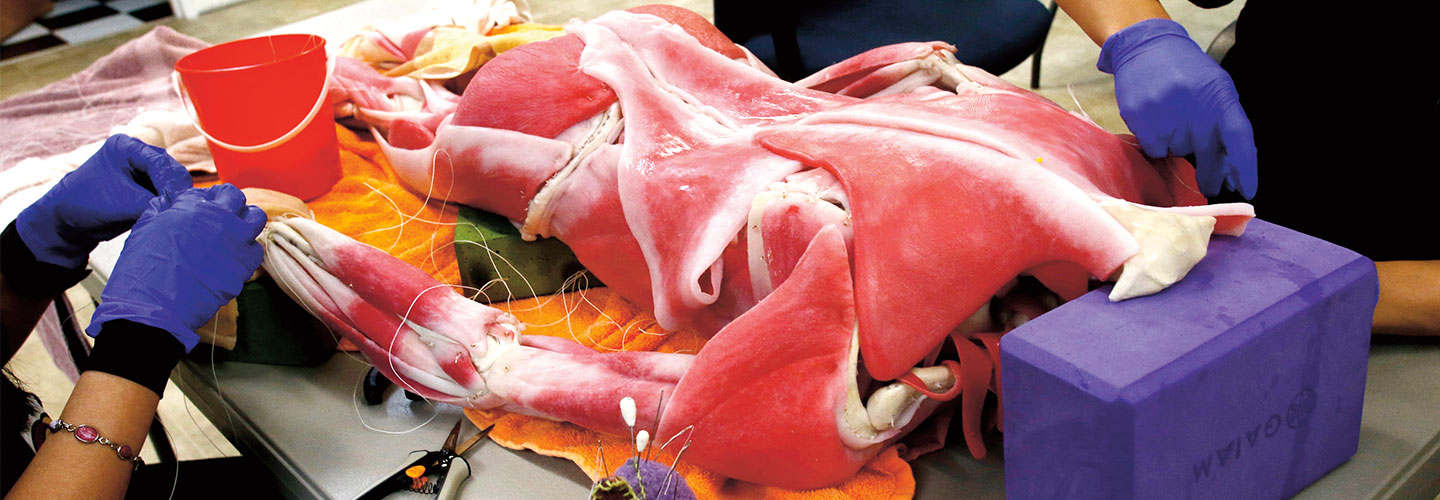Shelves are lined with buckets of hearts, lungs, livers, intestines, and other organs. Disembodied heads bob in tubs of water alongside arms, necks, and torsos. Skinless skeletons lie on tables as workers sew on muscles and veins.
Welcome to SynDaver Labs. Although it may look like Dr. Frankenstein’s workshop, the Florida factory doesn’t actually make monsters. In fact, it builds synthetic cadavers and body parts for science. Doctors and medical students practice on them, and researchers can use them to test new medical devices. Some of SynDaver’s spookily realistic models have made appearances on TV shows like MythBusters and Grey’s Anatomy. The company has even created a fake dog for veterinarians!
Shelves are lined with buckets of organs. Heads, arms, and legs bob in tubs of water. Skinless skeletons lie on tables. Workers get ready to sew on muscles.
Welcome to SynDaver Labs. The Florida factory might look like a scene from a horror movie, but it doesn’t make monsters. It builds realistic looking but fake bodies, called cadavers. Doctors and medical students practice on them. Researchers can use them to test new medical devices. Some of SynDaver’s spookily lifelike models have appeared on TV shows like MythBusters and Grey’s Anatomy. The company has even created a fake dog for veterinarians!

